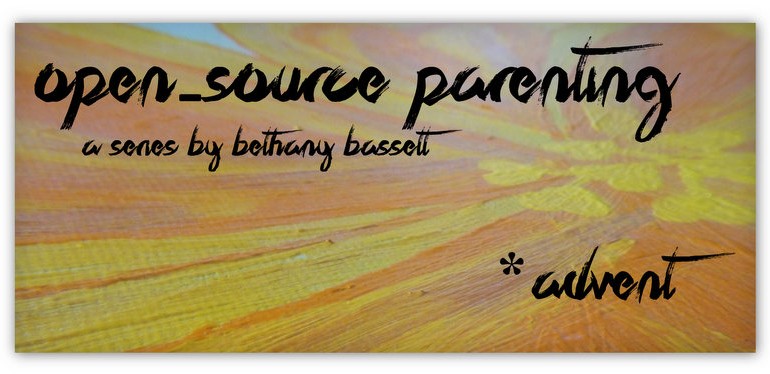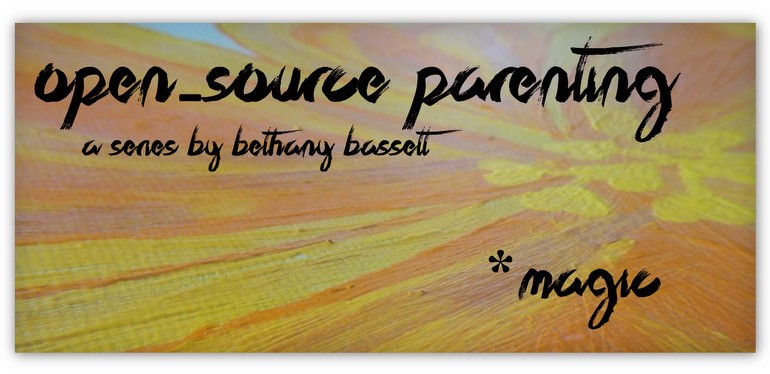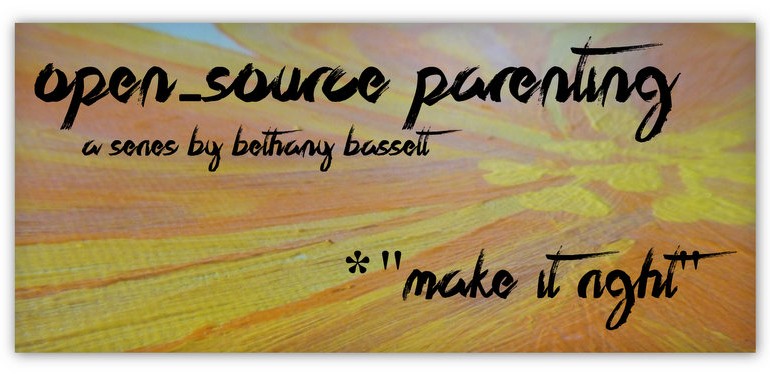A few weeks ago, I wrote about how the Christmas season tends to barrel into me somewhere around mid-November and then plummet me toward December 25th strewing intentionality, budgeting, and more than a small percentage of my joy in its wake. I resolved to find a way off the Polar Express this year—to reclaim giving without all the slapdash spending, to create a magical holiday for my girls without piling presents to the ceiling, to keep the twinkle lights in our souls lit all month long rather than building up to one big event (and the subsequent crash).
And then I got too busy to do much of anything about it.
That’s how it goes, doesn’t it? Idealism and real life rarely play nicely, especially when children are thrown in the mix. However, that’s where grace comes in.
Grace for ourselves for not having it all together.
Grace for our kiddos for unPinterestifying our charming family projects in about two seconds flat.
Grace for holidays that go according to plan exactly zero percent of the time.
Grace for me for sharing this advent activities list with you the day advent begins instead of sometime, you know, when it might have been useful. (Hi, 2015 readers!)
I put together this list of family activities this morning with inspiration from my friends Andrea and Adriel, plus my own Elf-esque love of sugar. I tried to make it a healthy (figuratively speaking here) mix of fun and meaningful activities, and there are more than twenty-four options so we’ll have a buffer in case December gets a little unruly on us. Most of them take less than half an hour out of the day. Also, all of these activities except for the first two are free or nearly so.
I’m doing nothing fancier with this list than printing it off on a sheet of Christmas stationery so we can read over it as a family and choose which activity we’d like to do every day of December. We plan to do this in connection with reading a chapter each day from The Jesus Storybook Bible, a gorgeously written children’s Bible that focuses each story on Jesus. (Even if you don’t have kids, this book is a gem.) And… that’s it! Christmasy magic without a zillion trips to the store.
If you’re interested in doing something similar, I’m sharing what I came up with below. Feel free to tweak it, wreck it, truss it up in tinsel, or use it as a springboard for an original list of your own. The idea is to make December meaningful for our kids without losing hours of sleep or shelling out big bucks.
Ready? Here you go:
An Advent Activities List for Designated Magic-Makers
- Pack a shoebox online for Operation Christmas Child ($25)
- Sponsor a child through Help One Now ($40/month) and write an introduction letter to him or her
- Go through old toys and games to give some away to a shelter for battered women and children
- Make Christmas cards to send to great-grandparents
- Fill an extra grocery bag when we shop to give to someone who needs it
- Make a pinecone bird feeder to hang outside for the birds
- Have a Christmas music dance party in our living room
- Take a family walk around downtown to look at Christmas lights and get a treat
- Make hot cocoa
- Offer to help someone with a task they don’t want to do
- Go on a Christmas shopping date with Mom
- Put on our best Scrooge faces and watch The Muppet Christmas Carol
together
- Make Christmas cards to send to grandparents
- Invite a friend over to play for the afternoon
- Read I Spy Christmas
or Snowmen at Christmas
(or another hidden picture book) together
- Make a Christmas card for friends who just moved away
- Go to the local animal refuge to play with the dogs and cats
- Wrap Christmas presents with Dad
- Make almond bark pretzels and share some with our neighbors
- Babysit a friend’s baby so the mom can go do some shopping alone
- Play a Christmas piano concert for relatives on Skype
- Write a letter to Jesus thanking him for all the gifts we’ve received throughout the year
- Make origami star ornaments
- Look up how they celebrate Christmas in other countries
- Watch Elf
(with plenty of sugary treats, of course!)
- Write a letter to troops stationed away from home
- Put on our Santa hats and read Christmas stories on the sofa
- Write little love notes to each other and put them in our stockings
- Make edible Christmas wreaths
- Rewrite the words to a Christmas carol for fun
—
Your turn! What would you add to the list? Do you have any tried-and-true tips for making December special without stress? The idea behind this Open-Source Parenting series is to share our collective wisdom for the good of all. I’ve learned more from other parents’ stories than I have from expert advice, and I’d wager you have too, so let’s continue the conversation in the comments below or over on Facebook. I’m looking forward to hearing your take!














